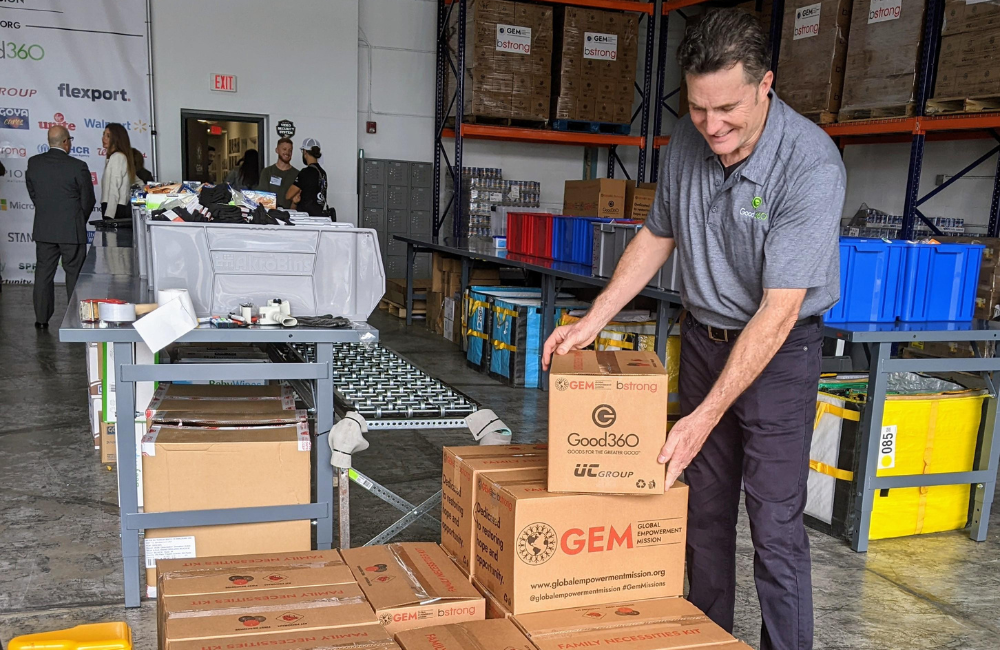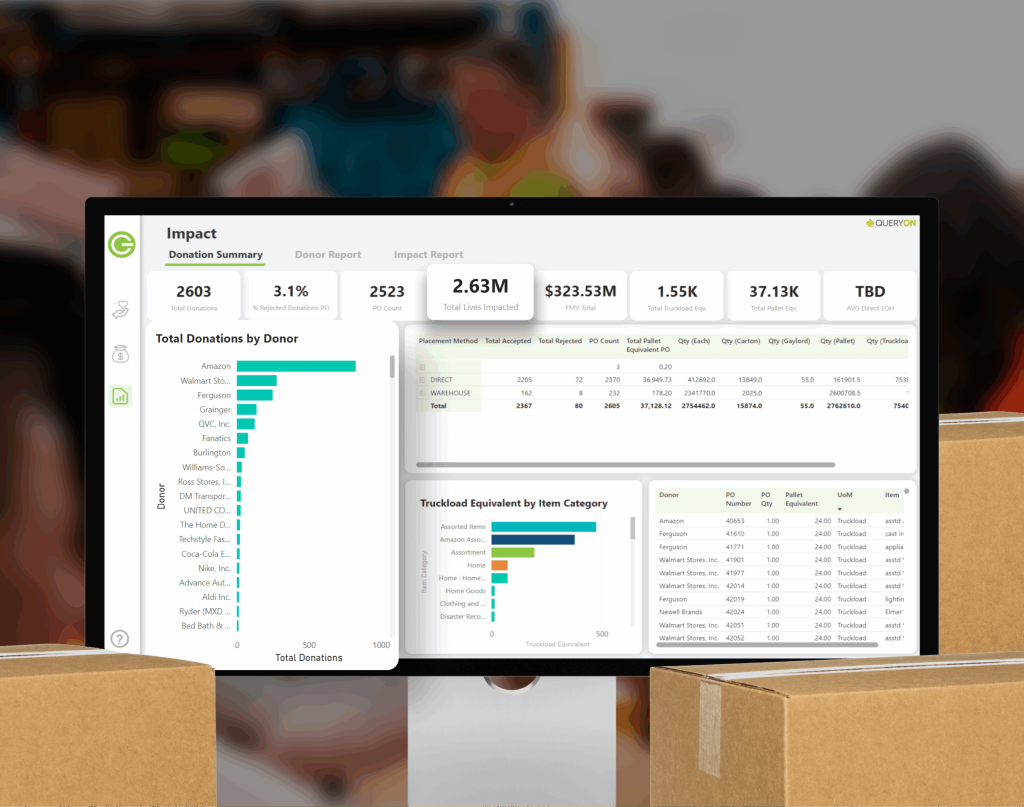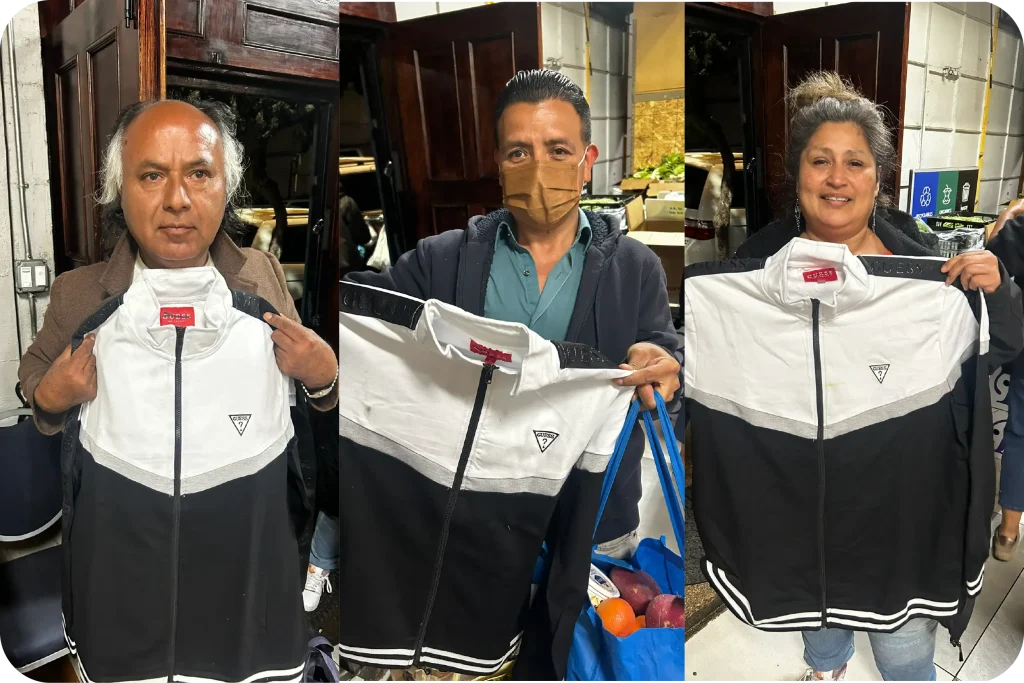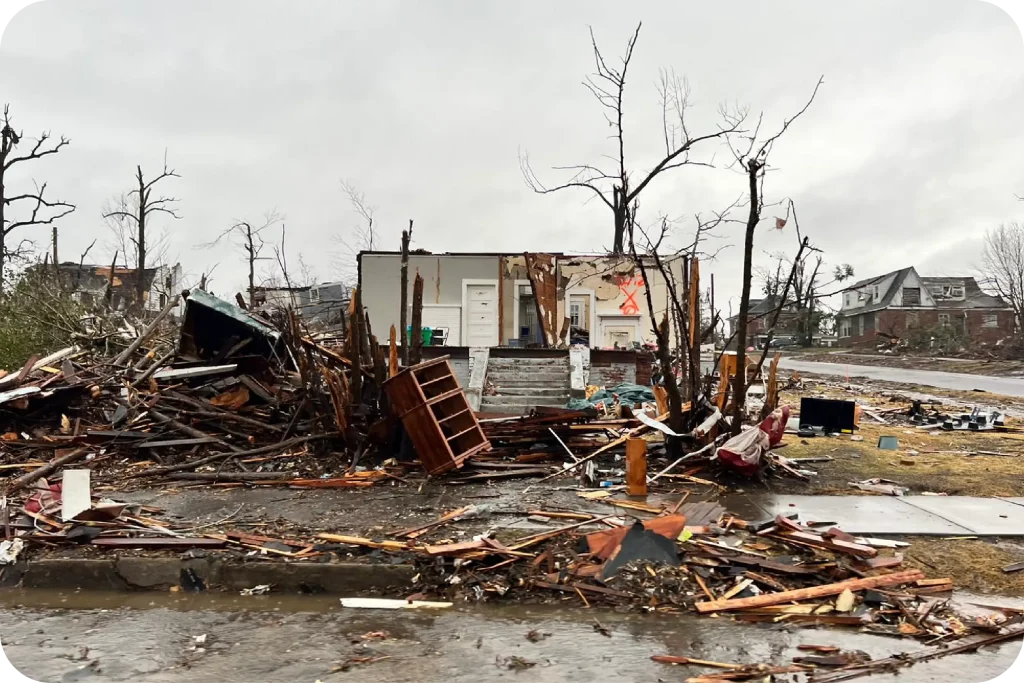As the frequency and severity of disasters continue to increase, Good360 likewise continues to build out our capacity to respond in the days, weeks, and years that follow as communities rebuild. As we invest in resilience, we are no strangers to receiving questions about disaster recovery best practices. Below are a few of the most frequently asked questions we receive:
We saw on the news that the mayor of a small town requested water for their residents. Should we send whatever we can?
The short answer is no. While immediate post-disaster needs are acute and the natural inclination to help as much as possible, it’s critically important to coordinate with local emergency management and vetted non-governmental entities to verify the scope of need and if it is being met through other channels. Although the media may show that there is a large need, it is integral that you vet this information from a trusted source that is aware of what is happening on the ground. What gets covered in the media may not be the most important need. Besides immediate needs, there will be long-term recovery needs that should be considered.
Officials from disaster-impacted communities should take time to understand what the product need gaps truly are before soliciting donations. Moreover, these requests should be made with specificity in order to avoid the deluge of donations that quickly overwhelm community capacity and divert resources away from more critical tasks. This is known as the “second disaster.”
Does every disaster need the same products?
There is an emergency management adage that says “If you have been through one disaster, you have been through one disaster.” In other words, no two disasters are alike. Post-disaster product needs are influenced by a number of factors, such as survivor demographics, regional climate, cultural nuances, time of year, and much more.
Giving the wrong products to the wrong population could seriously deter the efficiency of recovery efforts. For this reason, it is of utmost importance to get your information from agencies on the ground that understand the survivors who are being served.
My company makes prom dresses and the hurricane hit during prom season. Should I just send them?
No. One-time used clothing such as formal dress wear is not a critical need in disaster response. Please consider a cash donation so nonprofits like Good360 can determine where funding and product are needed most.
My company has merchandise that is missing some components or were returned by customers. We can no longer sell these items. Should I donate them to disaster survivors? Isn’t something better than nothing? Shouldn’t I send as much as possible?
An important question to ask yourself when donating product is whether or not you would use the item yourself. A common misconception individuals have when donating post-disaster is that something is better than nothing. These well-intentioned efforts end up causing more harm than good as already overwhelmed communities now have to dispose of or recycle these items.
For these reasons, cash is almost always the best option when donating. Cash gives communities the flexibility to assess the need themselves, fuel the often-ravaged local economy, and ensures dignity-based giving.
I have closed stores that could serve as extra warehouse space. Is this something I could donate?
Yes! Warehouse space is always needed after a disaster but is very challenging to find for organizations working on the ground. Many times, existing warehouse space is destroyed during the disaster itself, making efforts to find storage space even more challenging. This is compounded by the fact that demand for warehousing space rises exponentially after disaster, which means prices do as well.
For all these reasons, please contact Good360 to discuss options for use of any available space. The best time to coordinate with us is NOT during a disaster. Planning ahead helps us understand our capacity to respond when disaster does strike.
How long does disaster response usually last? When does the recovery process start?
Every disaster is different. For example, floods and wildfires have very different recovery time frames. The first phase of disaster is response, and the focus for nonprofits during this phase is mass care activities that preserve life, such as sheltering and feeding. This phase begins at impact and can last for a few weeks.
This is followed by short-term recovery, with the focus moving to debris removal, mucking and gutting, and temporary repairs. This phase begins once survivors begin to return, and can last from a few weeks to a few months.
Once debris has been removed and homes cleaned-up, the process of making permanent repairs, rebuilding, and re-homing begins. This phase, known as long-term recovery, includes everything needed to repair or rebuild a home and then make that house into a home, such donated furniture and household goods. This phase does not end until every survivor is back in a home or resources are no longer available.
Ultimately, disaster recovery efforts are complex and nuanced. Good360 acts as an expert in convening critically-needed resources while relying on local organizations to determine needs, provide case management, and distribute donations. The relationships we’ve built with these trusted partners allow us to get the right goods to the right people at the right time throughout all phases of recovery.








